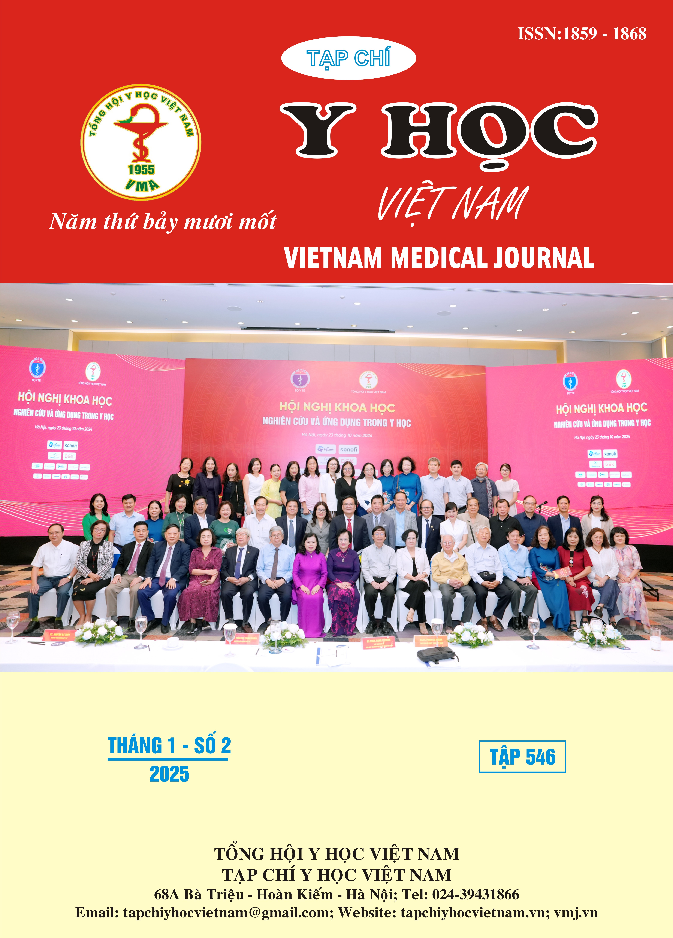RATE OF POSITIVE GROUP B STREPTOCOCCUS IN VAGINAL-RECTAL FLUID SAMPLES OF PREGNANT WOMEN 36-38 WEEKS AT SAIGON INTERNATIONAL OBSTETRICS HOSPITAL
Main Article Content
Abstract
Objective: Determine the rate of positive GBS and related factors in vaginal-rectal fluid samples in pregnant women 36 - 38 weeks at Saigon International Obstetrics Hospital. Methods: Cross-sectional study design surveyed 280 pregnant women with gestational age from 36 - 38 weeks at Saigon International Obstetrics Hospital, cultured and identified Streptococcus group B. Results: The rate of vaginal-rectal GBS infection in pregnant women 36 - 38 weeks at Saigon International Obstetrics Hospital is 12.3%. Factors related to the rate of GBS infection are pregnant woman's age (≥ 35) (OR 1.98, CI 1.14 - 3.45), history of vaginitis (OR 2.98, CI 1.09 – 8.14), clinical symptoms of vaginitis (OR 3.09, CI 1.41 – 6.76), pregnant women clean after urinating with water (OR: 2.32; CI: 1.07- 4.99), intercourse within 1 month before testing (OR 2.79, CI 1.14 - 6.83). Ampicillin, Penicillin, Cefepime, Ceftriaxone, Linezoid and Vancomycin are 100% sensitive. Tetracycline antibiotics 100% resistant; Erythromycin, Clarithromycin and Clindamycin had resistance rates of 42.9%, 39.3% and 35.7% respectively. Conclusion: It is necessary to increase screening for GBS in pregnant women aged 35 and older. A history of vaginitis and clinical symptoms of vaginitis are two risk factors that increase the possibility of GBS positivity in pregnant women that need attention.
Article Details
Keywords
pregnant, vagina - rectum, Streptococcus group B
References
2. Madrid L. (2017), "Infant Group B Streptococcal Disease Incidence and Serotypes Worldwide: Systematic Review and Meta-analyses", Clin Infect Dis. 65(suppl_2), S160-s172.
3. Thị Vĩnh Thành Nguyễn (2007), Tỷ lệ thai phụ nhiễm liên cầu khuẩn nhóm B tại Bệnh viện Từ Dũ 6/2006 - 6/2007Luận văn bác sỹ chuyên khoa cấp II.
4. Trần Quang Hanh (2020), Nghiên cứu thực trạng nhiễm liên cầu khuẩn nhóm B ở phụ nữ có thai và hiệu quả điều trị bằng kháng sinh trong chuyển dạ phòng lây truyền sang con tại bệnh viện Sản Nhi Nghệ An (2018 - 2019).
5. Bùi Thị Thu Hương (2012), Tỷ lệ nhiễm Streptococcus nhóm B âm đạo-trực tràng trên thai kỳ sinh non và một số yếu tố liên quan.
6. Ngọc Sơn Hồ (2017), Tỷ lệ nhiễm Streptococcus nhóm B âm đạo - trực tràng ở phụ nữ mang thai 35 - 37 tuần và một số yếu tố liên quan, Thời sự Y học, Chuyên đề Sức khỏe sinh sản.
7. Claudia Reinheimer et al (2016), "Group B streptococcus infections in neonates admitted to a German. NICU: Emphasis on screening and adherence to pre-analytical recommendations", Early Human Development. 103, 37-41.
8. Kathryn Braye (2019), Group B streptococcal screening, intrapartum antibiotic prophylaxis, and neonatal early-onset infection rates in an Australian local health district: 2006-2016.


